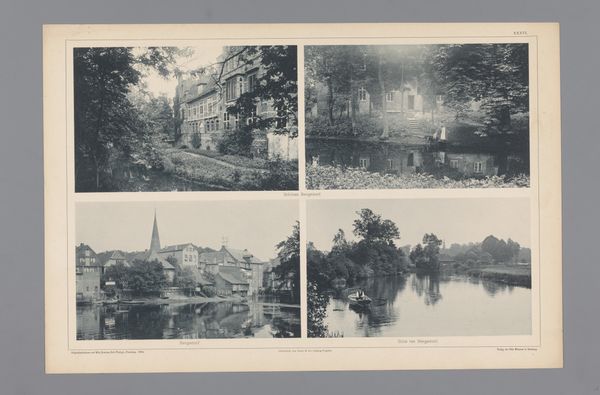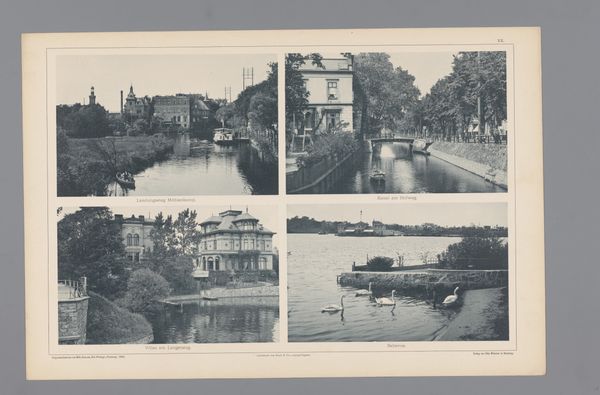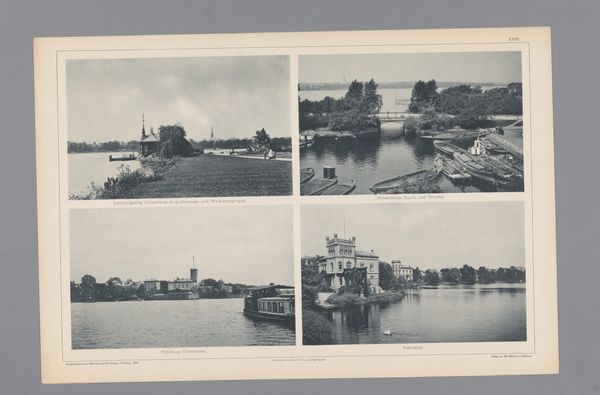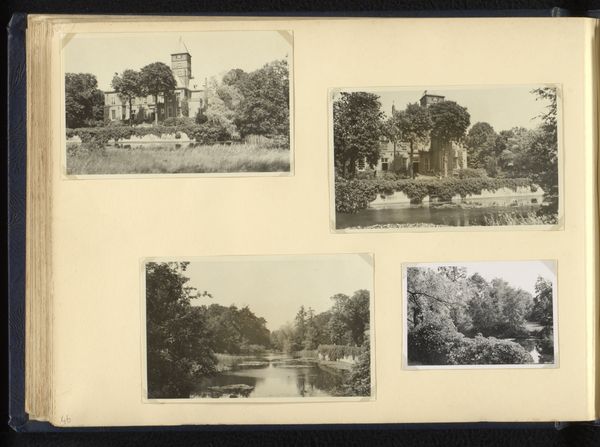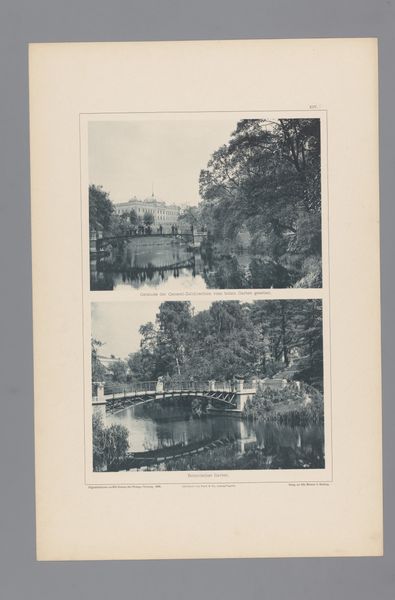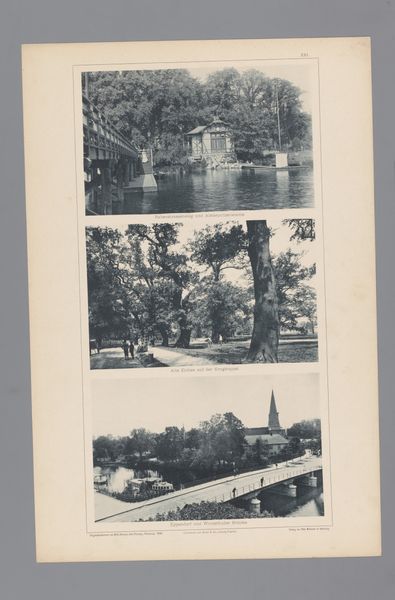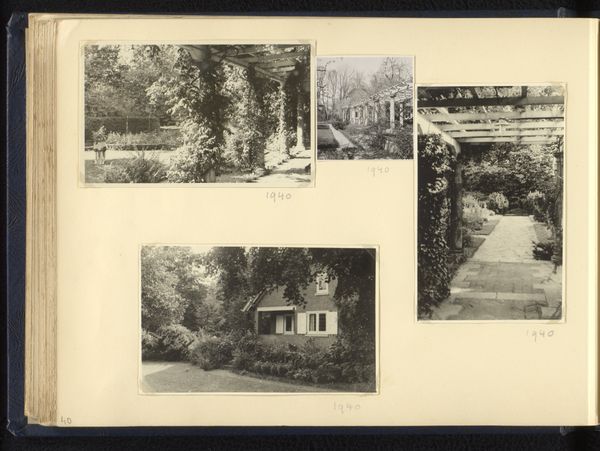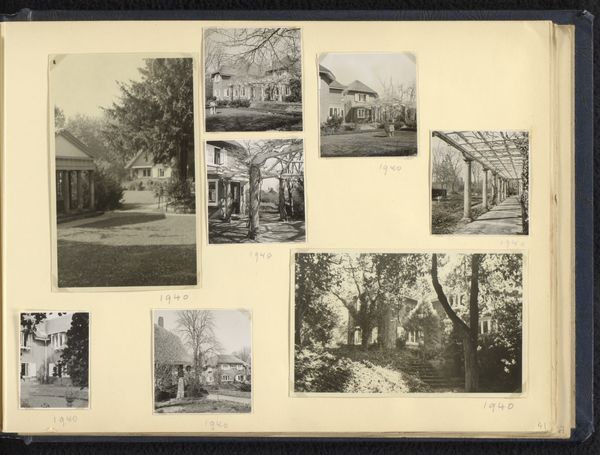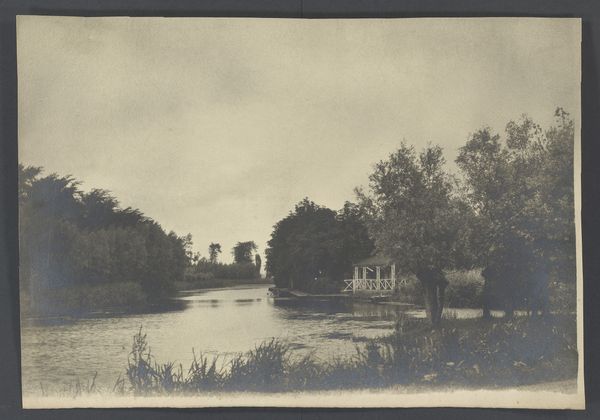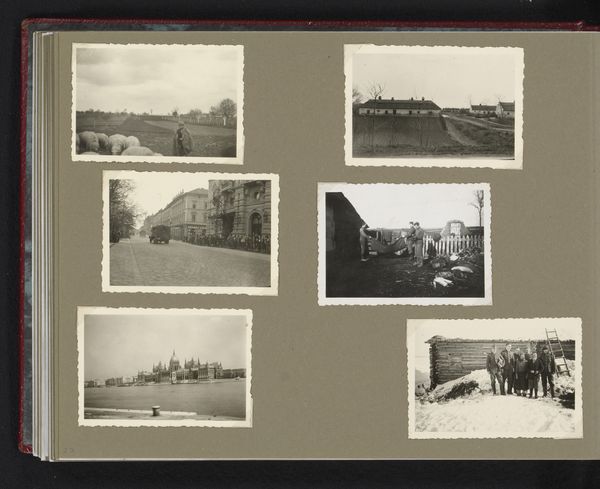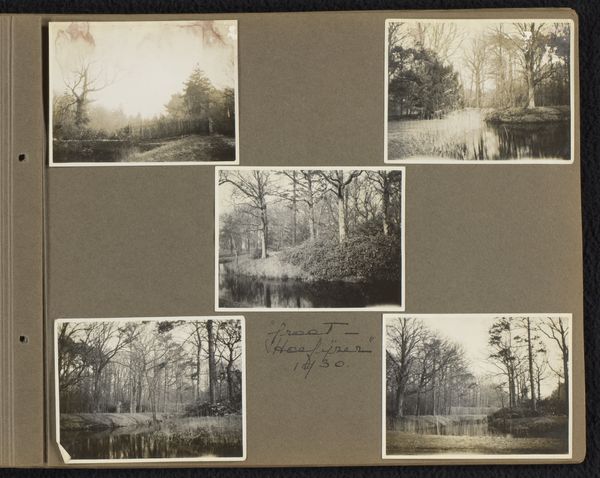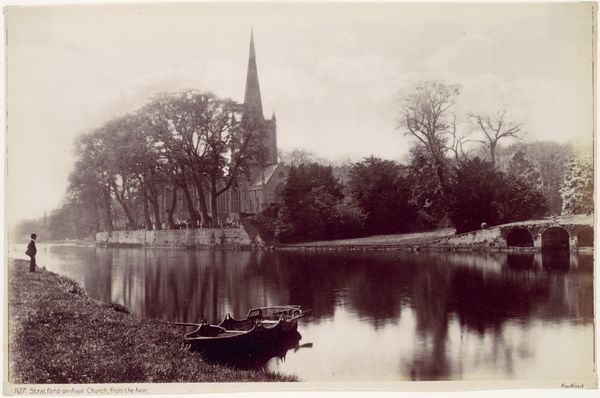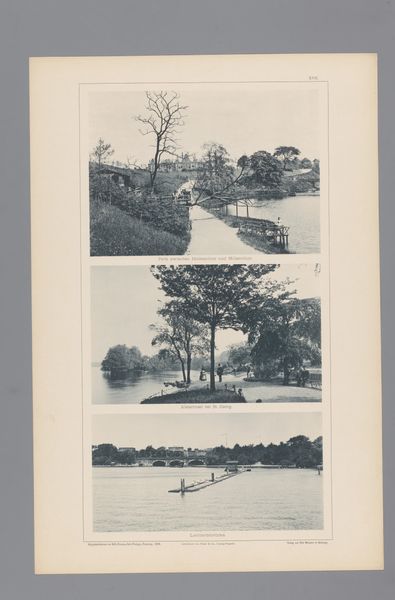
Vier gezichten op Hamburg, afgebeeld Wandsbeck, het Matthias-Claudius monument, Poppenbüttel en Rothenbeker Quellenthal 1894
0:00
0:00
print, paper, photography
#
pictorialism
# print
#
landscape
#
paper
#
photography
#
cityscape
Dimensions: height 332 mm, width 492 mm
Copyright: Rijks Museum: Open Domain
Curator: Let’s examine “Vier gezichten op Hamburg,” or "Four Views of Hamburg," a photographic print made in 1894 by Wilhelm Dreesen. It presents a quartet of scenes within the Hamburg area. What stands out to you initially? Editor: The tonal range first strikes me; the interplay of light and shadow feels so carefully considered in each scene. The compositions too. There is a clear structure organizing each of the quadrants, a grid of geometries and surfaces, from architecture to monuments. Curator: Absolutely. Consider the socio-political context in Hamburg at that time, a booming port city experiencing rapid industrialization and expansion. Dreesen's choice to capture these almost pastoral scenes could be seen as a commentary on the changing landscape and a longing for a simpler, perhaps idealized, past. It is a selection, one must ask why these specific sites and the scenes they frame were privileged. Editor: The composition really heightens that contrast between urban and natural, doesn't it? Notice how he uses framing devices—the canal edges in Poppenbüttel, the tree lines in Rothenbeker Quellenthal—to subtly contain these scenes of nature. How is the observer implicated? Where are they positioned and with what affect? Curator: Furthermore, there is a tension in seeing the Matthias-Claudius monument so prominently featured, given Claudius's own writings often dealt with themes of rural life, piety, and social responsibility. It is a pointed message from the artist. Whose vision of progress are we celebrating in public works, statuary and monuments? And whom do such artworks silence? Editor: It's fascinating how these photographs, through their delicate contrasts, manage to evoke both nostalgia and a kind of calculated tranquility. The formal elements construct a particular relationship with the world that feels very studied and deliberate. Curator: Indeed. Through a contemporary lens, Dreesen’s work reminds us to critically examine representations of urban development, particularly the narratives of progress and the displacement that often accompany them. Whose Hamburg is represented here? Editor: Precisely. His sensitivity with light and shadow lends these scenes an undeniable beauty while reinforcing how deliberately the shots have been organized, constructing a precise viewing experience. Curator: Thank you for sharing your insightful perspective. Dreesen’s images become more relevant as we continue navigating the complexities of urban life and environmental consciousness. Editor: My pleasure. It is the dialogue between form and historical awareness that enables us to revisit these scenes and pose pertinent questions of representation today.
Comments
No comments
Be the first to comment and join the conversation on the ultimate creative platform.

